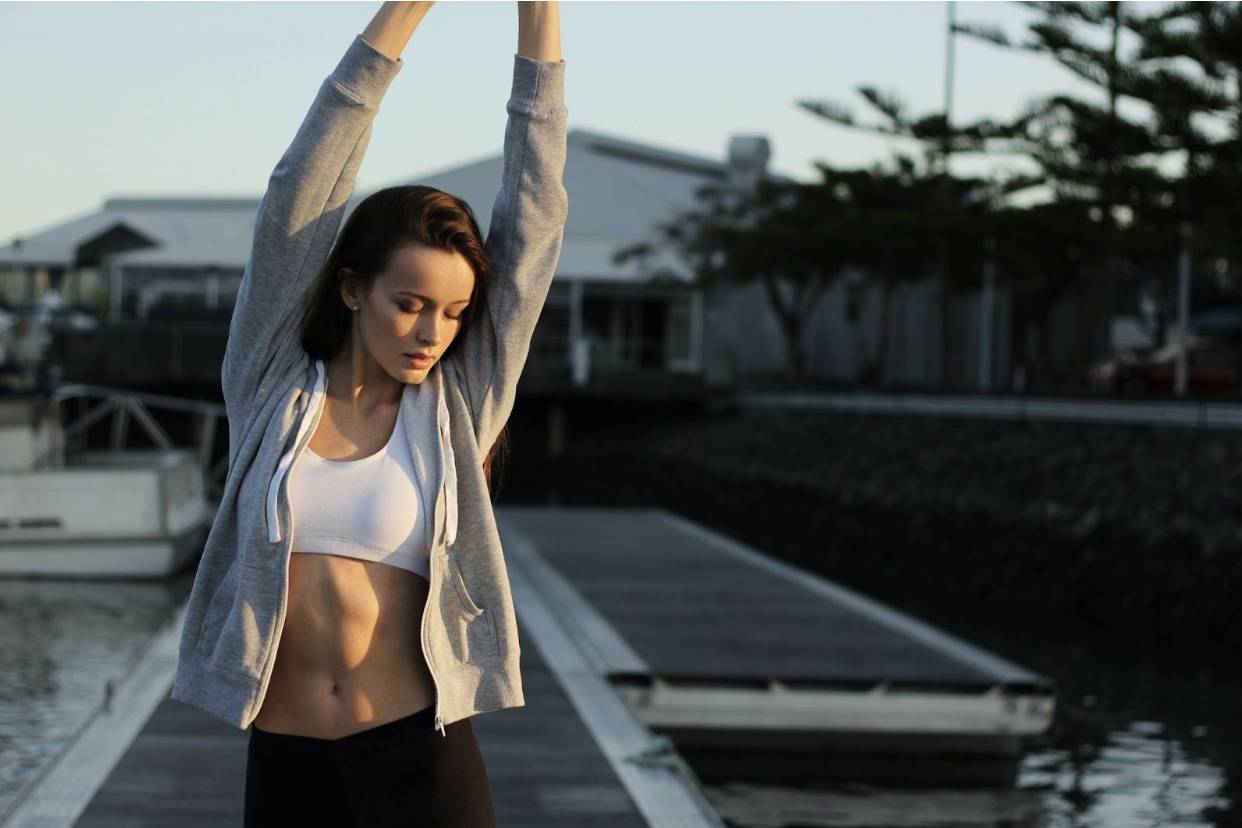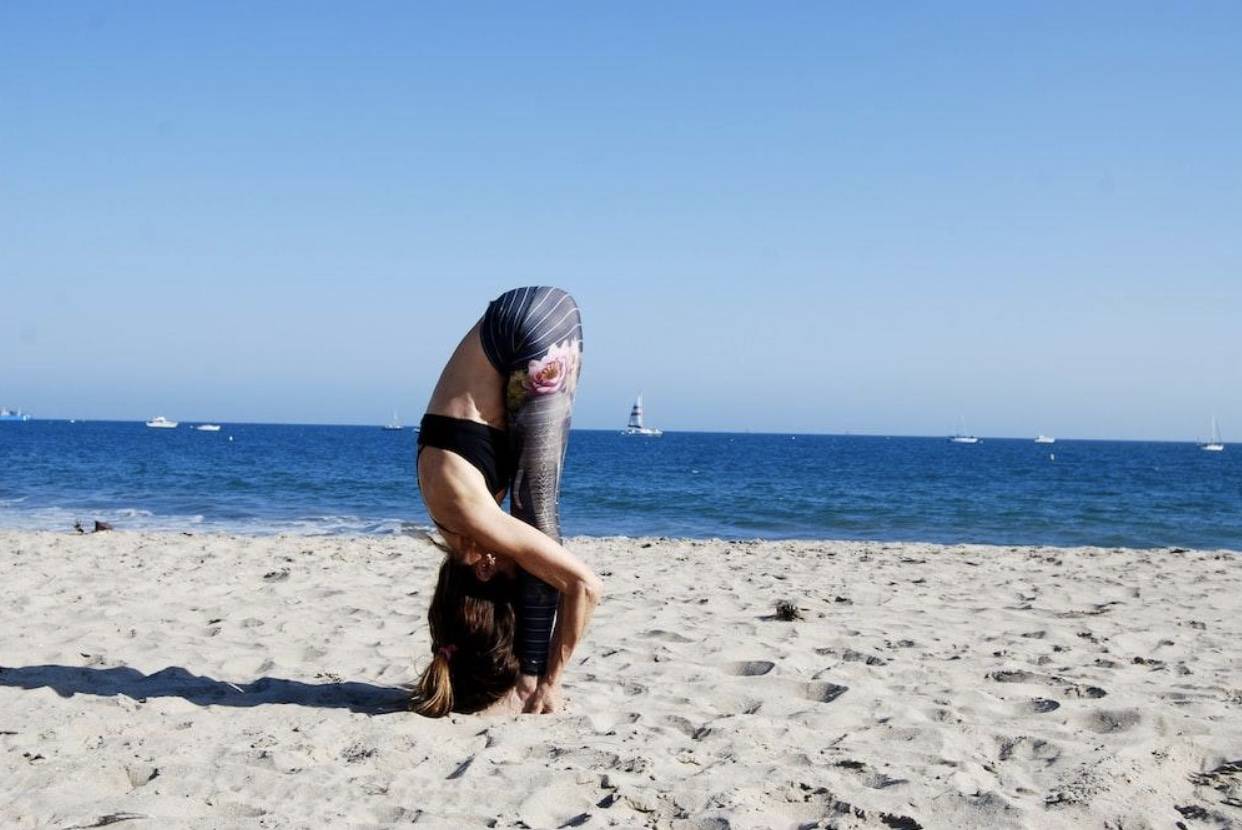This easy stretching routine includes simple poses that'll help improve your flexibility over time.

February 2023. This article is independently written by Shelby Golding. All opinions given are hers. Shelby has been certified as a personal trainer and nutritional specialist since 2007. In 2008, she found her passion for writing about these topics and hasn't looked back.

It's best to stretch consistently if you'd like to improve your flexibility, so we've selected five easy poses to incorporate into your daily routine. Ready to get flexy?
Quick and Easy Stretching Routine
The following stretches can be done in any order you prefer. Do three sets each, holding your first two sets for 20 seconds and your final set for 25 seconds.
Before this stretching routine, it's essential to warm up your muscles for at least 10 minutes. Your warmup might mean going on a walk, doing a simple bodyweight workout (try squats, lunges, pushups, and planks), or hitting the elliptical in the gym.
Warming up before stretching helps get the blood flowing in your muscles and reduces your risk of injury. If you've heard it the other way around, don't believe it! The myth that you should stretch before exercise does not reduce your risk of injury.
Standing Forward Fold

The standing forward fold is a staple of yoga and stretching routines everywhere and with good reason! Many people have tight hamstrings, which can cause back pain, hip pain, and an increased risk of injury. They're common in people who spend long periods sitting.
You'll begin standing with your feet hip-width apart to do a forward fold. Brace your core lightly and hinge at the hips to fold forward. Allow your arms to reach toward the floor or grab your elbows with opposite hands as you hold the stretch.
Always relax the back of your neck as you stretch and keep a slight bend in your knees. For a variation that you can do in addition to this stretch, try bending your knees more deeply and allowing your stomach to drape over your thighs to relax your lower back muscles.
Lying Spinal Twist
Twists help maintain your spinal health, stretch your muscles, and promote digestive health. You can do this lying spinal twist in bed or on the floor – if you have hard floors, a yoga mat or towel will make it more comfortable.
Don't be alarmed if you feel or hear popping as you twist. This is a sign that your back has readjusted from the movement. However, it would be best never to force your twist deeper than is comfortable.
Start by lying flat on the ground, and then bring your knees to your chest. From this position, keep your legs together as you adjust so that your thighs are vertical and your shins are parallel to the ground. Then slowly let your legs lower towards one side as far as they can, relaxing your torso as you move into the stretch.
If your legs don't touch the ground in the twist, place a pillow, rolled-up towel, or yoga block under them so they have something to rest on as you relax. Then, repeat the twist on the other side to complete one set.
Standing Side Bend
A standing side bend helps move your spine and stretch your upper body – primarily your latissimus dorsi, one of your largest muscles. It also helps promote good posture and strengthen your core muscles.
Start by standing straight up with your feet hip-width apart and your core engaged before doing the standing side bend. Then lift your arms straight up over your head and grasp your left wrist in your right hand. Keep your core engaged as you gently tilt your body to the right and allow your right hand to pull your left wrist lightly.
Neck Stretch
Most of us are familiar with neck aches. And if you're rolling your neck just reading this, you know what we mean! Neck tension is common in anyone who sits for long periods or spends a lot of time on their phones.
As you hold the stretch, don't move your head forward or backward, only to the side. For more of a stretch, you can place your right hand on your head and think of pulling your ear away from your shoulder, but you should never use your hand to push your head down into a deeper stretch.
Repeat the stretch on the other side to complete one set. And remember, stop when you feel a stretch instead of trying to achieve a specific shape!
Sphinx Pose
The sphinx pose comes from yoga practice, and it helps engage the muscles in your core and upper back while you stretch your abdominals. This pose can help build back and core strength that eases neck tension over time while allowing the front of your body to become more flexible.
In this position, press your hands and elbows into the floor and imagine pulling your chest forward and up slightly. Then, lightly press the tops of your feet into the floor as you engage your legs.
If you have lower back problems, be cautious as you move into this stretch and stop if you feel any pain in your lower back.
To do the sphinx pose, lay on the floor on your stomach with your legs hip-width apart. Prop your upper body up on your elbows, bending them at a 90-degree angle and keeping your forearms pointing forward with your palms on the ground. Your shoulders should be directly above your elbows with your chin tucked.
What to Do for Other Aches and Pains
Stretching can do wonders for your body, but it doesn't fix things immediately and may not eliminate all your aches and pains. So instead of expecting results in a few days, try stretching after every workout or every day and give it time.
In the meantime, wear your Kailo Pain Patch whenever you're feeling discomfort. Kailo is designed to relieve pain in seconds, and you can wear it anytime, anywhere. In addition, participants in a recent clinical study showed a significant increase in quality of life when switching to Kailo from oral medication! And 99% of patients felt pain relief within 10 minutes of using Kailo.






